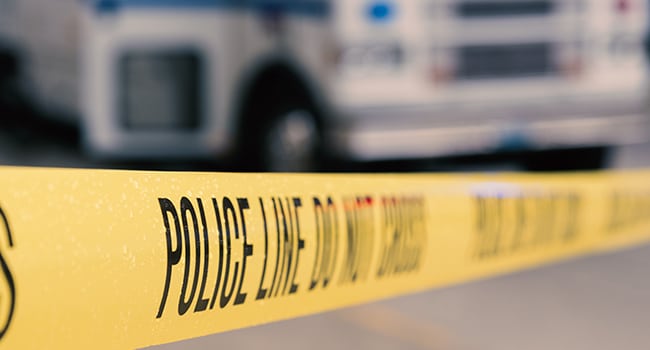Active Shooter Training: Flaws and Keys to Success

Active shooter training is an invaluable and critical investment for school districts, private businesses, healthcare institutions, and government agencies across the country. When more expensive solutions are not an option, the best thing these groups can do is prepare their team members to respond effectively in the event of an attack. The challenge with many of the programs on the market is how they approach training. A few companies have made waves with how controversial their training style can be. For this reason, we will explore what those companies do wrong and what effective training looks like.
Why Should Districts Consider Active Shooter Training?
The bottom line is that school districts, private businesses, healthcare institutions, and government agencies need to be proactive about active shooters. The complexity involved in mental health issues and gun rights means that a solution to active shooters is not on the horizon. People will discuss and argue these issues deeply for years to come. Being proactive means being prepared. While there are several solutions that go into a comprehensive active shooter preparation plan, active shooter training is one of the best and most affordable options. Until we can prevent them, we have to prepare for them.
The Problem With Active Shooter Training Programs
Many of the active shooter training programs on the market are hot-button, controversial issues, and for good reason. Institutions across the country have contemplated whether they should invest in the training because of the negative experiences and stories from their peers or from the news.
Including Students
While this is generally aimed at schools, this is one of the most controversial parts of active shooter training programs and needs to be highlighted for any institution considering training. Many argue that active shooter drills meant to emulate actual attacks can be traumatic for children, especially those who are too young to understand the difference between real and fake. Many of these programs have caused outrage across the country when students believed the drills to be genuine attacks. Could you imagine your child in school thinking they were actually under attack? This has consequences beyond just scaring children or staff and shows a lack of critical thinking on behalf of the training organization.
Instilling Fear
Another criticism of active shooter programs is that they too realistically simulate an actual attack. Training that causes fear and physical discomfort or pain takes away from the important learning that needs to happen in order for people to respond effectively. Individuals who took part in one training program were physically harmed during a training session when trainers lined them up against a wall and shot plastic pellets into their backs. Those staff members even considered a lawsuit because of the traumatic experience. When training takes it too far with the fear factors, they miss out on empowering participants to be engaged in the training process. When people feel empowered, they are more receptive.
What Effective Training Looks Like
While many of these companies use fear-mongering methods of training, there are companies, like ONE Training, that take a different and more realistic approach.
Train The Right People
According to the National Safety Security Protection Association (NSSPA), 83% of past active shooters in schools were current or former students. This means that including students in the training is a critical misstep, a misstep that ONE is mindful of in their training. ONE has studied these past attacks, which is why they are very strategic in who they train in varying settings.
Training should empower staff, not scare them. There’s no doubt that an active shooter incident is horrific, however, when people feel empowered by what they know and can do, they are more likely to save their own life and the lives of others. By educating staff in different scenarios, showing them how they can run-hide-barricade-fight, as well as helping them understand their power as first responders, they will feel more confident in their ability to protect themselves and those around them.
Customize to Specific Needs
Rather than providing a one-size-fits-all solution, ONE also customizes training to different organizational roles. From greeters to bus drivers, administrators to teachers, there are different scenarios and responses that each role would be more likely to experience. Creating this customized training helps them better understand and visualize how they can actually respond in the event of an attack.
Based on the History of Attacks
Another area where ONE stands out is that they’ve studied the history of active shooter attacks to help inform their training. Understanding how attackers have gained entry into a building, how quickly and easily confusion resulted in more death or injury, and how effective SROs or security officers have or haven’t been, all provide great insight into how organizations can make strategic changes throughout their buildings.
Critical Expertise
Lastly, ONE doesn’t just rely on input from former law enforcement to inform their training. ONE knows that pulling expertise from multiple professionals is critical to creating a more comprehensive solution. That pushed them to pull together experts from education, mental health, law enforcement, special forces, and governmental agencies. These layers of experience and critical thinking have contributed to a more robust understanding of physical security in any physical setting.
Conclusion
School districts, private businesses, healthcare institutions, and government agencies across the country need to consider active shooter prevention training in order to be proactive and protect the lives of their people. While training comes in various forms, selecting a program that empowers staff will prove to be the most valuable and effective kind. For more information about ONE Training, visit www.trainingone.org.